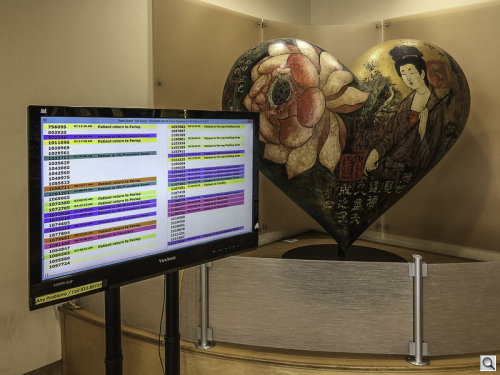Photo Corners headlinesarchivemikepasini.com
![]()
A S C R A P B O O K O F S O L U T I O N S F O R T H E P H O T O G R A P H E R
![]()
Enhancing the enjoyment of taking pictures with news that matters, features that entertain and images that delight. Published frequently.
Friday Slide Show: The Hospital Room



8 October 2021
Whoever first observed that photography is all about the light must have been the Jack Handey of his day, drowning in his deep thoughts. But there's no better laboratory proof of the argument than taking a series of images in a hospital room.
This particular room was Joyce's home for a month as she underwent a series of surgeries. It did have a window but it was more pro forma than functional. It seemed to draw energy out of the room, tucked in a corner beyond the bathroom door.
Light in the hospital room was primarily fluorescent light not sunlight.
The wall unit had two banks of flourescents. One facing the ceiling and one facing the floor. The patient could control them with a paddle connected to the electrical system. Most patients on the floor simply turned them off and watched TV.
But Joyce likes to read (and see what she is eating), so she played around with them. She had them both on to read because she spent a few days without her reading glasses and had to stop down her irises to focus on the page.
It's really it's own kind of illness, photography.
But she liked bouncing the light off the ceiling too as a diffused impersonation of an overcast day.
There are a couple of secondary light sources, too. The TV, for one, which is no minor thing. A 28-inch flatscreen. LG (Life is Good), naturally. And then there's the bathroom light, which can contribute a slit of brightness when the door is left ajar.
We took snapshots on our visits of the various things you never remember seeing. The pumps, the numbers, the labels, the tubes, the charts, the sink, the bed, the food.
It's really it's own kind of illness, photography.
But we came home with some healthy images. And they were interesting because of that light. Even that utilitarian illumination, far from monoblocs and strobes and umbrellas and other light modifiers, provided some mystique to the raw mechanics of medical intervention.
Over the years, we have spent months at a time visiting various relatives in various hospitals, returning every day to follow the case and sit through it beside them. The rooms are all the same. They could all be the same place, the same stage. The only difference is the drama being played out.
But artificial light always paints the scenes of every act.
There are scenes where the glare of truth can not be denied in brief meetings with white-coated professionals. Others are faintly lit for short-lived encounters with loved ones. Still more take place in dimmed caves where the soul recovers what the body cannot.
But there is always light.
